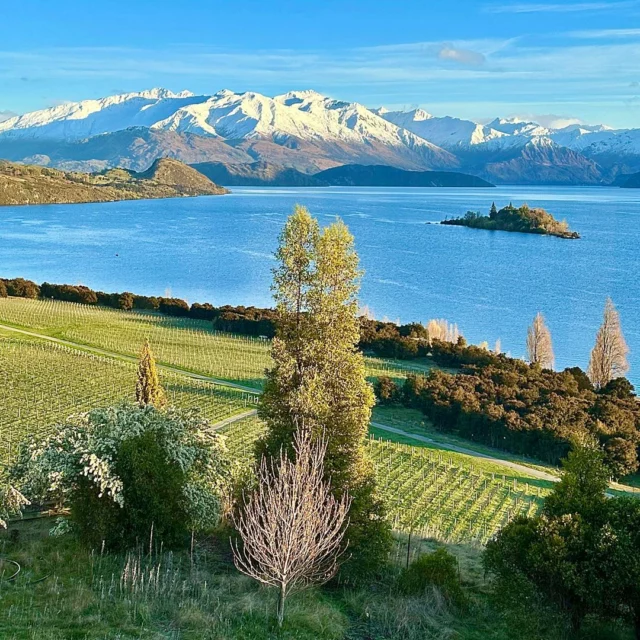2021 in Burgundy: An Introduction to the 2021 Vintage
Updated Sep 2022
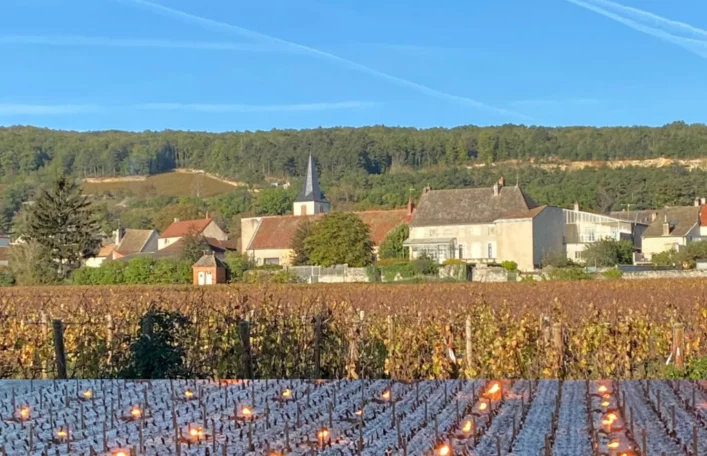
The 2021 Growing Season
The weather in the vineyards of Burgundy can be divided into three parts: cold, wet and variable.
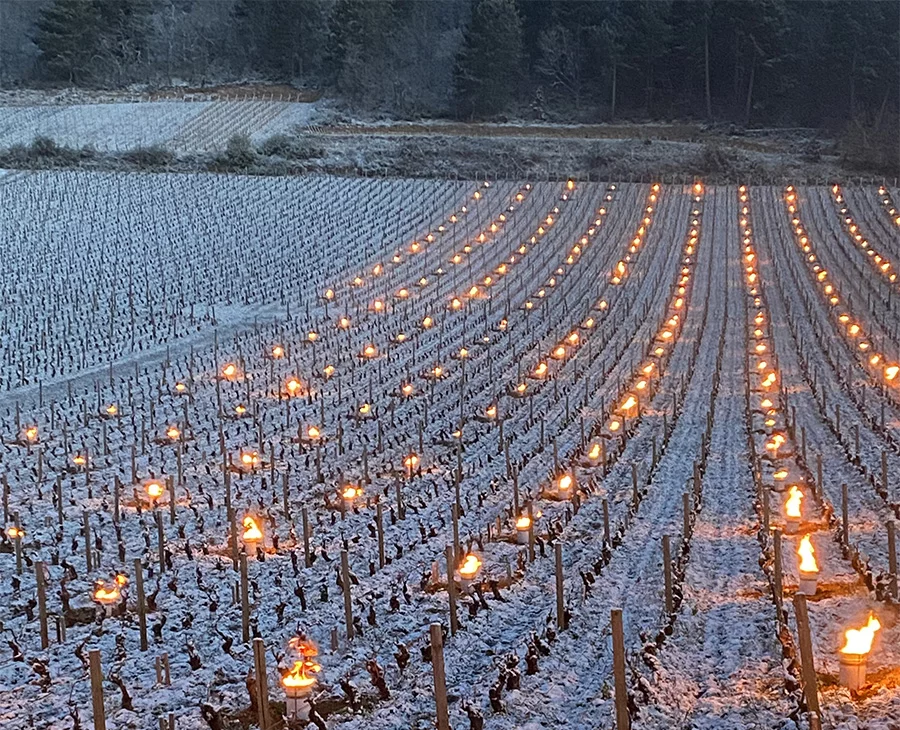
The intense cold came in early April and removed most of the crop. The next few months were wetter than usual and engendered significant disease pressure and were exceptionally demanding of the vignerons’ time, energy and morale; while better weather at the end of the season enabled the ripening to progress through to harvest, admittedly while dodging the showers
The winter was a little less mild than its immediate predecessors and with an encouraging amount of rain. March was on the cool side until a sudden burst of heat during the last week of the month caused the vegetation to leap forward: dangerously, given that the weather was due to change over the Easter weekend.
A mass of cold Arctic air began to arrive on Easter Monday, 5th April, and stayed for over a month. The early days were the deadliest with negative temperatures in the early hours of Tuesday 6th starting the damage. The following two nights were much worse: no colder during the night of 6th/7th, but a snowfall in the evening provided the unwanted humidity that exacerbates frost risk, and temperatures were below freezing all through the night, which raises logistical problems for effective frost protection measures, as the paraffin based bougies last for only 8 hours. The following night was drier but even colder, with temperatures as low as -8°C.
All of Burgundy – indeed most of France – was affected. Chablis at least has the most extensive range of frost protection measures to fall back on, and some of the crop was certainly saved in the grands crus and leading premiers crus. The whites of the Côte d’Or were very badly affected, and the damage continued further south at least as far as the Mâconnais. Because the damage arrived early, it has affected Chardonnay which buds before the red grape varieties.
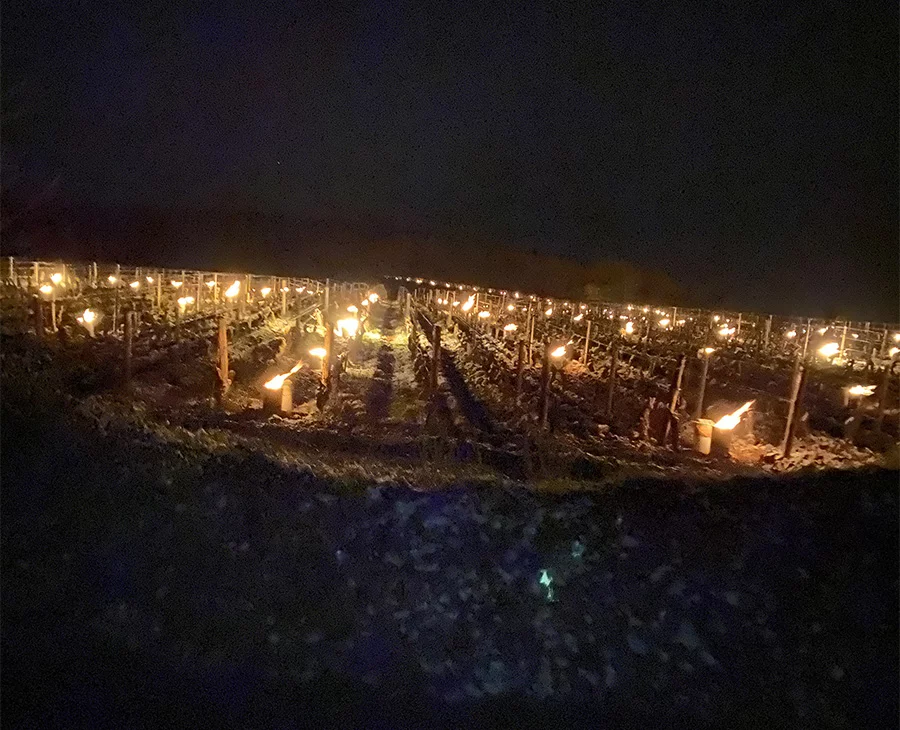
The cold weather continued throughout April and into early May – cool enough to slow down recovery, especially for the Pinot Noir. The cold dry air from the north finally gave way over the weekend of 8th/9th May to bring an Atlantic airflow and rain. With that, as in 2016, came intense mildew pressure. It was not easy to manage all the spraying treatments as regular showers made it difficult to get into the vineyards without tractors bogging down, while organic treatments were easily washed away. The further south you went (as in 2002) the worse the weather, so there really was no let up in the Mâconnais and Beaujolais.
Flowering for the chardonnay was adequate, not so good for the pinot noir.
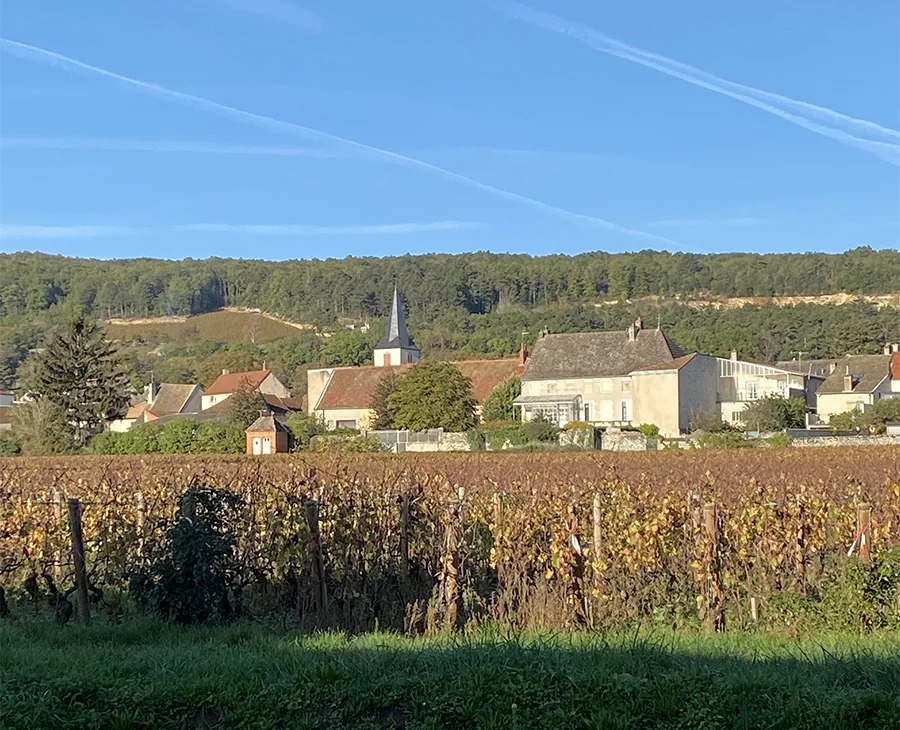
The weather did improve in August but I cannot say that it was gorgeously balmy, though in one way that was a relief after the heat and drought of 2018, 2019, 2020 and, looking into the future, 2022.
After such a rocky summer, September began with more stable weather, with temperatures mostly around the seasonal norm, sometimes warmer. Ripening, which had been proceeding slowly, began to catch up rather more rapidly. There was occasional rain, rarely dramatic, and in another year this would have been very useful. However, given the fragile state of the vineyards, any rain was making producers nervous. There had been an early attack of rot at the beginning of August which had dried out in the vines, but could spark off a much more significant onset if conditions dictated it.
From late June onwards growers were talking about perhaps beginning in the period 15th to 20th September, and this did not really change until the last minute when a few damp days on 14th-16th caused those who might have started on the 15th to push back until better weather on Friday 17th. Many chose to start then (including some in the Côte de Nuits given that the weather forecast for the following two weeks was erratic, and the health of the harvest already fragile.
While Friday and Saturday were fine, Sunday was raining through the day and Monday also had some showers. The next opportunity to start picking was from Tuesday 21st with many holding off for a couple more days to let the ground dry out. Further rain came between 27th and 29th September, by which time most people were finishing.
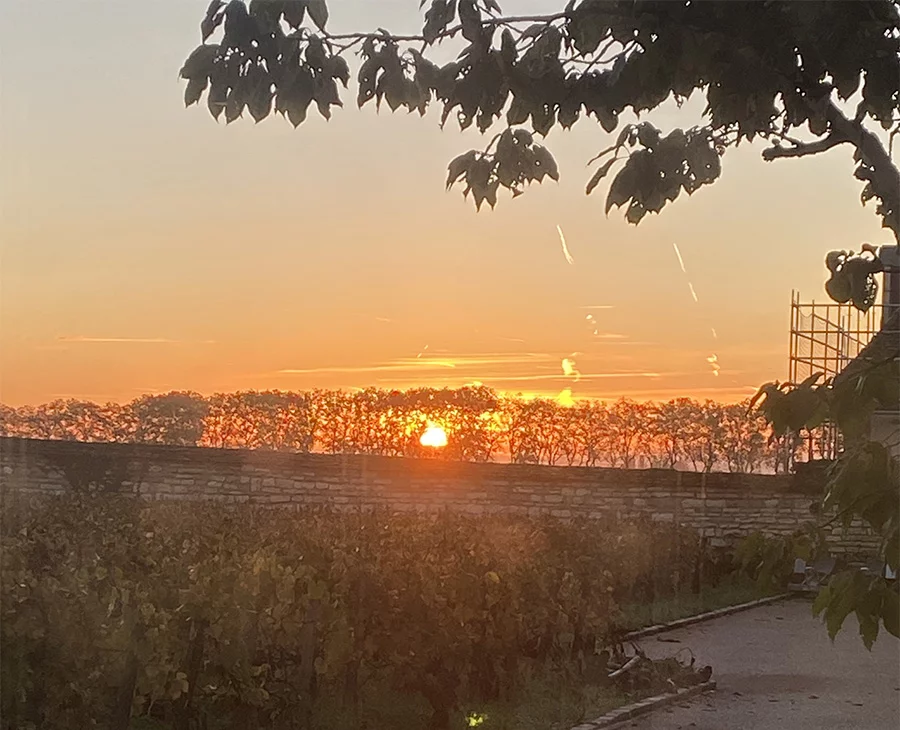
- Were there any solutions to the frost?
The necessary infrastructure is not in place, or barely, in the Côte d’Or for either water aspersion or electric cables. Wind turbines (or helicopters), whose purpose is to move cold air out of the way and let warmer air in to replace it do not really work if all the air is cold, as was the case in 2021. Bougies, the little tin cans with paraffin or vegetable oil in solid form, had some effect, but were marginal at -8°C, and most people did not light them early enough on the night of 6th/7th April.
Best, though, was to minimise damage through management of the vines themselves. Late pruning, especially if you had not tied down the canes, was clearly a really significant factor in limiting damage, since the metal wires conducted freezing temperatures as well as they do heat in the summer. Others used plant therapies: sarriette (savoury), oregano and thyme before the frost to heat the body of the plant, a mixed infusion of valerian and nettle after the frost.
- Was it a year NOT to be organic?
Quite a few producers told me that 2021 was the first year of the three year certification process for organic farming, and that they were able to stay with the program. Back in 2016 quite a few were obliged to drop out to save the crop. It was manageable, just, in 2021 but it took an awful lot of hard work. I have never seen so many exhausted vignerons, with morale so low. But they persevered and came through.

- When to pick the grapes?
Weirdly, all parts of Burgundy seemed to pick at much the same time, which may have been one amongst several reasons for the difficulties in getting picking crews at harvest time.
The two main groupings in the Côte de Beaune were around the 17th/18th or 22nd/23rd of September, and there are many who opted for those same dates in the Côte de Nuits. Hardly anybody started later than 25th September in either Côte, and most people hurried to complete given that the weather remained uncertain. Exactly the same story, and dates, in Chablis.
Was there a sweet spot which, in retrospect, looks to have been the best option? Perhaps – it depended on how fast your own grapes were ripening, and whether rot was beginning to be a definite problem. If you were able to hold out until the slightly later picking window, beginning around 23rd September, then the grapes did seem to gain significantly in phenolic ripeness during those extra few days – possibly in sugar levels too, though that is less important.
Winemaking choices
So the grapes have come in, and they may be of doubtful health and modest ripeness in 2021. The first requirement is to optimise the health of the crop, starting with the sorting table – which all good producers know to use for red grapes, but very many do not systematically employ for the whites. They needed to in 2021 to resist the problems of rot and oidium, possibly mildew too. Let us assume that anybody you want to buy from has taken the right precautions for rot. Oidium can be more insidious but can be sorted at two levels – one by removing the grapes, and secondly by tasting the juice after pressing and cleaning it up through filtering before fermentation starts.
In both colours, the health and quality of the lees could be an issue. If you went ahead blithely with plenty of solids in your barrels, you could end up with some particularly ugly reductive character. Therefore many producers cleaned up the must of their white wines more than usual before fermenting, or decanted with much clearer wine their reds between fermentation and sending to barrel.
- Do we care that many producers chaptalised?
No, we don’t. Adding a small amount of sugar is not a game changer, though I wouldn’t want to see more than one degree of alcohol added in this way. One of the benefits of judicial chaptalising, a few tenths of a degree say, is by adding little doses of sugar to extend the fermentation, which can deepen the flavour profile.
Having said which, a small handful of producers chose not to chaptalise – Jean-Marc Roulot in Meursault and Fabien Dauvissat in Chablis spring to mind – even if the potential alcohol of the wines was below 12%. Brave decisions, but the wines can be utterly delicious, even though the cuvées which are lighter in alcohol may not last as long as some others.
- What is the acidity like in 2021?
We might have expected an aggressively acid vintage in this theoretically cooler year, but it was not really the case. Acidity seemed very aggressive before malolactic, and all red wine producers in particular noted that they were in despair until after the ‘malo’ had gone through.
In truth, there was clearly a significant level of malic acidity, such as we do not see in the hot years, which of course was converted at the malolactic moment. There was also plenty of tartaric acid, but this too seems to have precipitated out more than expected. I might just mention very briefly that some people will have acidified individual cuvées in 2021, and more did so in 2022. I have not specified who in the notes, because only a very few of the most honest producers admit it, and they will have used the stratagem discreetly rather than as a wholesale response.
- Was it wise to use any stems (whole bunches) in 2021?
The conventional wisdom is that it is wiser not to use stems if you cannot be sure that they are both ripe and healthy. Those who always use whole bunches mostly continued, though sometimes with a slightly reduced percentage. Others made choices according to cuvée. One or two who like to go counter current used more in 2021, or even went 100% for the first time, but very few producers in either case. I found that a proportion of stems, perhaps one third, seemed to work extremely well. It did not bring any unwanted green-ness to the wines and it seemed to enhance and extend the finish.
- Ageing the wine
What do you do when you have more barrels in your cellar and not enough wine to put in them?? Many people cancelled their orders for new barrels, partly so as to use what they already had, but also because they felt that a lighter and sometimes fragile vintage like 2021 would not enjoy being drowned in oak. A couple of people, went the other way, arguing that some wood tannins would add useful structure to softer wines, but that would not have been my choice. Of course, if you didn’t use any new oak in 2021, you will not have any one year old barrels for 2022!
Most people are keeping their white wines for as long as usual in barrel, because the wines are taking their time to develop. Good decision. The exception to this would be very small cuvées of one or two barrels, where there may be no suitable tank to house them during the second winter, for those who like to rack them out of wood after 12 months. These wines are often being bottled a bit earlier, and straight from the barrel.
The story is different for the reds, where the great majority of producers have decided to shorten the maturation, whether in barrel or already racked to tank. This is an indication of the relative fragility of the wines, and also the decision that many people made, probably wisely, to clean up the wine more than usual between pressing and sending to barrel.
Quality assessments
- How did I go about tasting the wines?
From the start of October through to the first ten days of December I spend pretty much all day everyday (week day) tasting with the producers. How they present the samples can be quite different. These tastings used to be, almost always, down in the barrel cellar. Now more often we will taste from pre-prepared samples in a tasting room. I miss the old style which feels like the authentic Burgundy, but I have to say that the new way is more comfortable and, more importantly, it is much easier writing good tasting notes seated with my lap top at a suitable height.
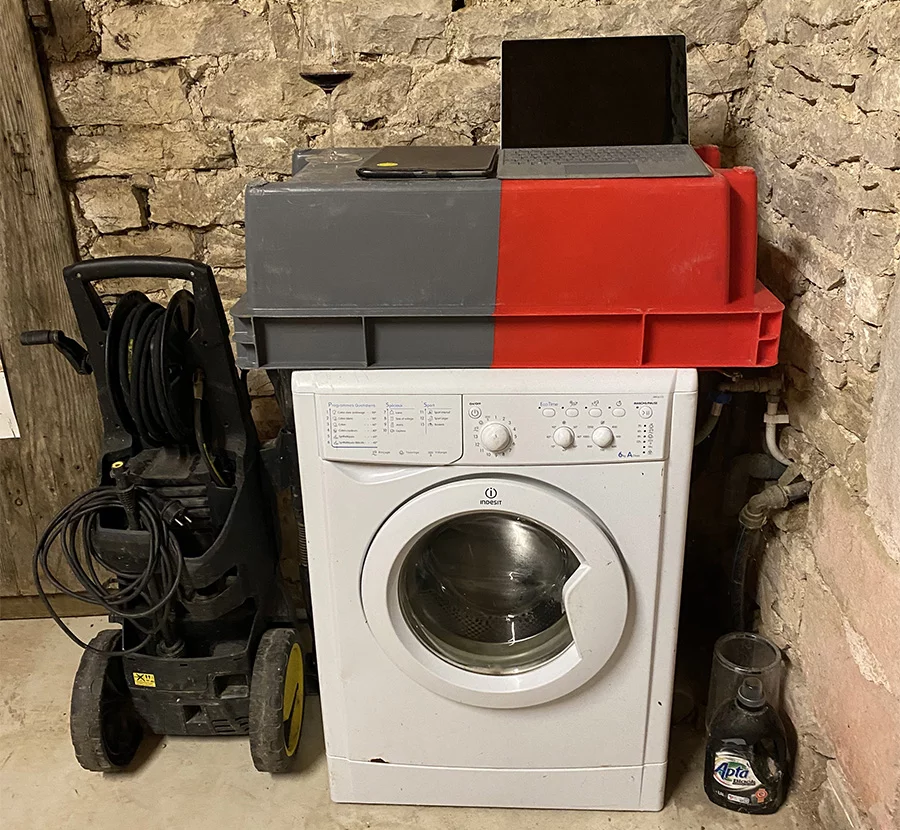
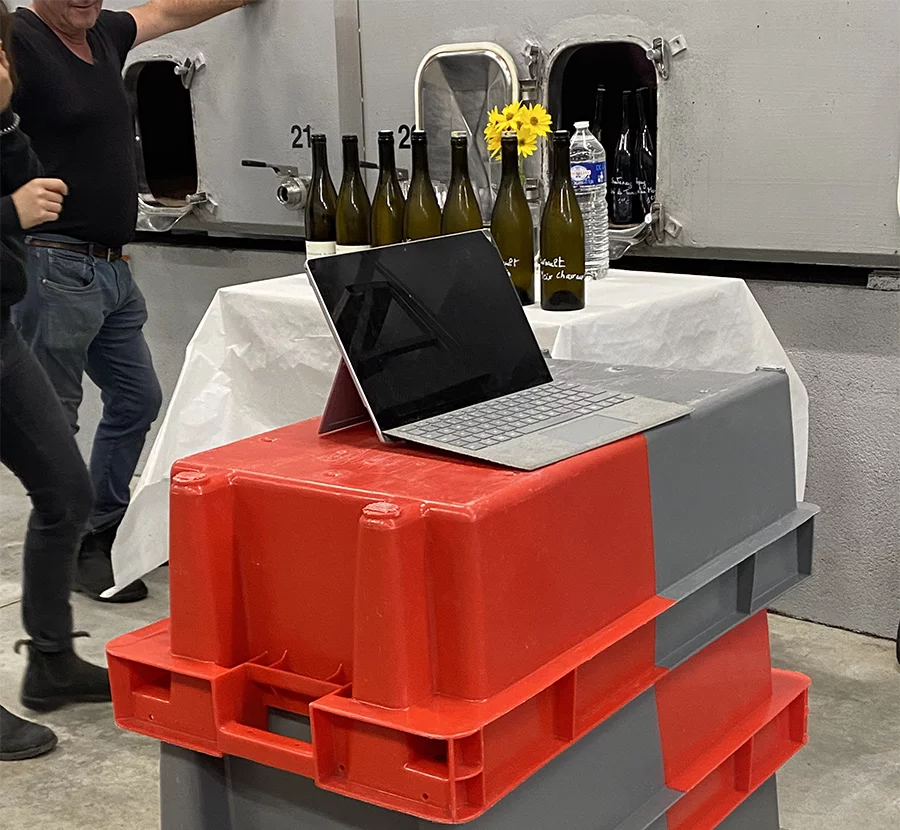
The samples tasted are genuine, without trickery, but with nuances as to how representative they are. Where the wines are not yet assembled in tank, some producers just select from a single barrel, usually not new wood, others do a quick blend between old and new wood in approximately the right proportions, while the most conscientious make up a sample from every barrel in the cuvée. The wines are all at different stages of development, which is why I include in my notes a mention of the current position, especially if a recent racking or bottling, or a late malolactic fermentation, may have impacted on how the wines are showing. Ideally, we would not do any such tastings until the wines are safely in bottle – but in the current working of the commercial world, the wines are being offered for sale before then.
I am conscious that the wines change – usually improve – with every passing month, and I do need to take that into account when completing my assessments of the vintage for my December reports.
- And what do the scores and stars mean?
In general, the scores are ‘absolute’ and the stars are ‘relative’, in the sense that they relate to the presumed place in the firmament of a given appellation, since we know that a really good Bourgogne Rouge is not going to challenge a really good Chambertin, but may be outstanding within its class. However, with the nature of 2021 in mind, I was given to reflect on how I select points in the first place. For me, they are designed to reflect the apogee of a given wine, when it eventually gets to that point. So 2021 will on the whole be getting lower points than the successful wines of 2018-2019-2020 and I imagine 2022, where the best wines will be utterly glorious when they reach their zenith in quite a few years from now. 2021s can be characterised as delicious and will be ready earlier, but at their best will rarely hit the same heights as the winners in 2018, 2019 and 2020.
- White Wines
We feared another 2016, when the wines so often had a sweet and sour character due to two generations of grapes being picked together, one over ripe and the other under. I scarcely ever saw that in 2021. There was an unexpected soft character in some wines, especially, alas, in Chablis, and rarely a sharp acidity. These will be good, sometimes very good wines, and as long as price does not prohibit, I see no reason not to follow them without qualms. I do not expect many wines to offer an ageing profile much beyond the medium term, which, I am reliably assured, is what the market wants. I may be an outlier here.
The whites in particular, though the reds too, are very clear reflections of their individual sites. “C’est une vraie lecture de chaque terroir” opined one producer. They do also show the hierarchical order from generic up to Grand Cru very clearly.
- Red Wines
We do not have another 2016 in reds either. The wines are not so deeply impressive with the chance of a very long life. I suspect that the two generation thing which afflicted the whites in 2016 has slightly transferred to the reds, which would explain the peppery character of many wines alongside the attractive red fruit.
But this is indeed, as all your merchants will be telling you, a vintage which delivers a welcome lightness of touch with a classical pinot flavour. Look, if you lived through the brutal season as a vigneron, you cannot possibly call 2021 classical, but many of the wines are rather lovely in a style which we have not seen in the last few years – so I am happy to accept “a return to the past” more than the epithet classical.
The wines grew on me the longer that I spent tasting, for which there are two or three possible reasons: (1) they were definitely improving with some crucial extra weeks in barrel or tank; (2) I started in the south and finished in the north, and there is no question but that the Côte de Nuits got the better of the deal in 2021; and just possibly (3) that I became more acclimatised to the vintage and started to enjoy the attractive points and be less severe on the negatives.
- Which other vintages remind you of 2021?
A horrible question, which I asked a few producers, or indeed they asked me, but it is not obvious. For one thing. No recent vintages seem to resemble those pre-global warming. Still, I will attempt to have a stab at the question. Some of the vintages mentioned by producers in discussion were 2001, 2007, 2011, 2013 and 2014.
I do not really see 2007 and 2011 which were both especially early growing seasons marred by fairly miserable summers. There are parallels with 2013 and 2014, the former more in white, and especially Chablis, where there was a call between leaving the grapes to complete ripening and suffering from the onset of rot. (But see my forthcoming Chablis report which will indicate who got the balance right in 2021). The 2014 parallel is more in red, but again with rot in the background. There are some rather too raw 2014 pinots where growers had to pick before rot took over. That is a little bit less evident in 2021 but remains in the back of my mind.
There is one other vintage, though, to consider – one not offered by the growers themselves, but I can see a parallel, and it is very cheering. I began by suggesting that the weather was cold, wet and variable but maybe not so much as all that. It just seemed so as we have got used to a much warmer climate.
Studying the figures supplied by Météo-France for the key months of June, July and August over vintages, since 1947 for mean temperature, and 1964 for rainfall, I discover that 2021 slots in at mid table in both parameters, alongside one other vintage. For mean temperature, 2021 attained 18.45°C, against the average of 18.85, featuring in 29th place, ahead of 2001, 2004, 2007, 2008 and 2014 and immediately behind 2012 and 2010 (18.51°C). For rainfall, 2021 measured 272.5mm against an average of 211mm, 55th wettest, better than 2007, 2011 and 2014 – and right next door to 2010 at 270mm. So in both parameters 2021 falls almost exactly level with 2010, a vintage which started modestly and we now think of as rather fine!
Buying Decisions
- Prices
I have not yet seen many prices for the vintage but they are clearly not going to be cheap. The idea a year ago was that the price of the 2020 vintage had been fixed to take into account the tiny 2021 crop, and would not go up again this year, but there really have been some significant additional costs in dry materials especially, assuming that one can actually get hold of bottles, corks, cartons etc. It looks to me, from the small sample which I have seen, that the Grands Crus have taken another leap towards the stratosphere populated by secondary market prices.
- The pessimistic view
What are the possible pitfalls that may ensue in a worse outcome? Well, the inherent fragility of some of the red wines may triumph over the prettiness of the fruit. In a few cases it was already clear that there were vegetal tannins which might dominate. Some of the whites can be a bit fragile too, but that matter less as they will in all be probability drunk up quickly.
Less clear is whether the red wines that have a pepperiness not linked to whole bunch vinification may develop a similar green character to 2004, or whether alternatively they may become fascinatingly complex and leafy as they age. My gut feeling is more the latter than the former, but it is not certain.
- The optimistic View
The whites seem sound to me, as well as attractive. No problem to maintain a normal buying program, within the limits of the small volumes available, and assuming that prices have not gone off the charts.
Could this vintage be better than we currently think? See my possible parallel with the 2010 vintage in the section above. It is certainly true that the wines have been developing well over the autumn months, and may easily continue to do so.
There is excellent vineyard definition and the style is what the French call digeste which does not really work as the English digestible. It means accessible, easy to drink and I suppose easy to digest as well. It was very evident to me that I finished each week feeling far less tired than after the equivalent amount of work tasting the 2020s.
- How long will these wines last?
2021s, both red and white, will not develop into legendary long-lived wines. It seems in any case that more people now want to drink their wines earlier, though I remain unconvinced that this is true for the great classic wines of the world. One place where something accessible early is really needed is the restaurant scene, especially in and around Beaune. I really do not want to drink 2018s or 2020s young, nor 2019s either, and the more accessible 2017s have almost all disappeared already.
2021s will not fall over quickly. For the first time, I have added drink dates to all the wines (with three or more stars). They are only a rough estimate because Burgundy has moments in the sun and other behind the clouds, while people’s palates can also vary widely in reference to how old they like their wines to be. So my dates are inevitably conservative.
- The sweet spots
There really is a respect of the hierarchy in 2021, but the top end is too expensive for this style of what is a ‘drinking’ rather than ‘collecting’ vintage. There are some good generic wines but with most producers there is a clear scaling up at village level. So I would look at village wines and the value 1ers Crus in 2021.
Geographically, and with a slightly heavy heart, I have to acknowledge that the Côte de Nuits has come out better than the Côte de Beaune for the red wines. We should, though, listen to the counterpoint provided by 2021 in the midst of hotter years – and take the chance to stock up on Volnay and Chambolle-Musigny which show the elegance and fragrance of their appellations in a way that has perhaps been missing for the last few years.
A similar point can be made for Puligny-Montrachet. I do not think that Puligny has done better than its immediate neighbours, but Meursault and Chassagne have ridden the warmer wave with relative equanimity, whereas Puligny has lost one of its former key characteristics, that of a beguiling and refined floral bouquet, which can happily be rediscovered in 2021.
Some key bullet points
- A horrible growing season, which was contested with vigour and intelligence by an impressive number of vignerons. Really, I take my hat off to them. There were so few who threw their own hats in and succumbed. Grumbled, they may have, but the work ethic and effort was remarkable, and well rewarded.
- Please remember that all my thoughts expressed above are necessarily generalisations. There are plenty of wines that will not conform: obviously if that is because they have done less well, we can ignore them. But do please take the time to search out the gems which have successfully avoided any pitfalls in their path and will emerge as truly beautiful wines.
- As always in Burgundy, there are probably more exceptions than there are rules in the first place. It is all in the detail. These preliminary thoughts and my upcoming reports on the individual wines across the regions of Burgundy are aimed at supplying the details to enable you to buy well and drink well. Happy hunting!
A Final Thought
If a quarter of customers follow as per usual, and remaining customers buy a quarter of what they usually do, then everybody should get most of what they want, and the vintage will pretty much sell through.
Jasper Morris, 24th December 2022
Dedicated Tastings from: 2021
- Domaine de la Romanée-Conti 2021 in Bottle
- Laurent Ponsot and Joseph Roty 2021 in Bottle
- Domaine Hubert Lamy: The 2021 Vintage
- Domaine Leflaive 2021
- 2021 Côte de Nuits South: Vosne-Romanée to Nuits-St-Georges
- 2021 Côte de Nuits North: Chambolle-Musigny to Marsannay
- The Chablis 2021 Report
- 2021 Côte de Beaune – Part 3
- 2021 Côte de Beaune – Part 2
- 2021 Côte de Beaune – Part 1
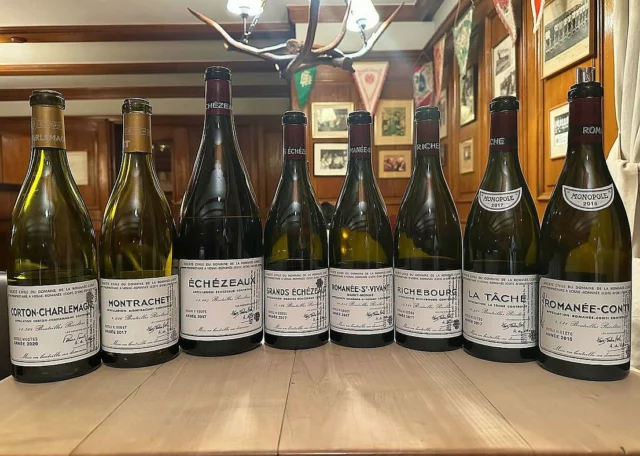
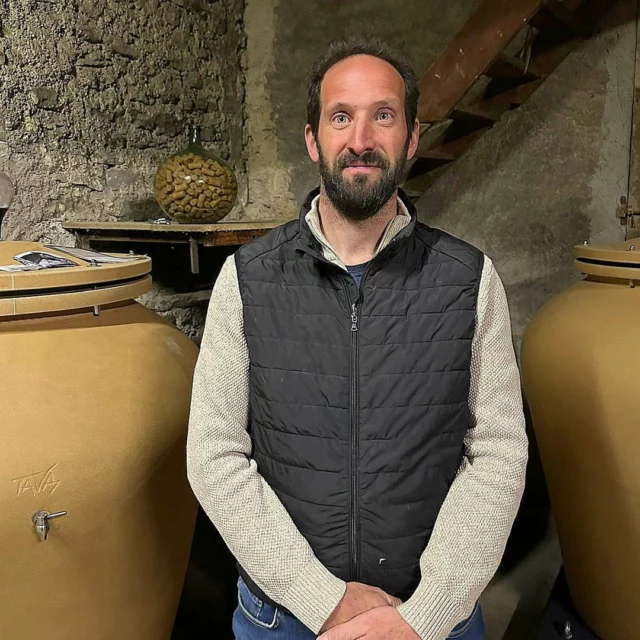


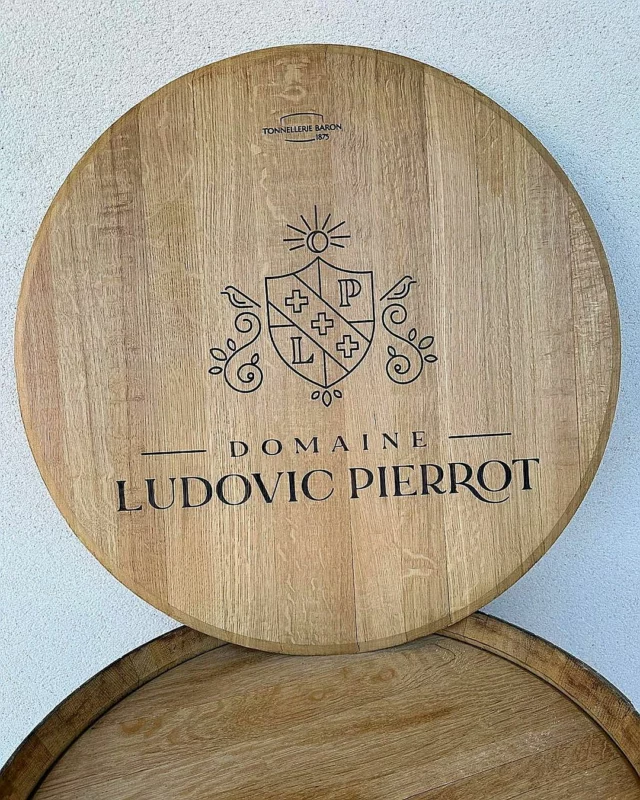
 NEW TASTING REPORT
NEW TASTING REPORT
 Rippon: T
Rippon: T